-
Air data can be used to reconstruct radiological releases
New research demonstrates that experts can use data from air sampling technology to not only detect radiological releases, but to accurately quantify the magnitude and source of the release. This has applications for nuclear plant safety, as well as national security and nuclear nonproliferation monitoring.
-
-
Predicting clay swelling for better nuclear waste disposal
Bentonite clay is planned to be used as a key barrier in the deep geological disposal of high-level nuclear waste. To ensure the safety of disposal, it is crucial to understand and predict the swelling behavior of bentonite clay. The swelling property, however, is regulated by multiple structural and environmental factors. A new model simulates the atomic-level interactions among the components of clay-water system, reproducing the swelling trends and swelling pressures measured by experiments with good accuracy.
-
-
Extrusion technique creates new fuel from depleted uranium
Advanced nuclear reactors will use new types of fuel. To ensure such systems are safe, experimental fuel samples must be fabricated and tested in safe research environments. Marking an important step toward the advancement of a new type of reactor, Idaho National Laboratory (INL) employees recently completed the first successful test of fabrication equipment in the Experimental Fuels Facility (EFF). Specifically, they finished depleted uranium extrusions — a process of shaping material by forcing it through a die.
-
-
Ending civilian use of highly enriched, weapon-grade uranium
Efforts to convert civilian research reactors from weapon-grade highly enriched uranium (HEU) to low enriched uranium (LEU) fuels are taking significantly longer than anticipated, says a report from the National Academies of Sciences. The report calls for the federal government to take immediate steps to convert civilian research reactors currently using weapon-grade HEU fuel to a lower-enriched HEU fuel while awaiting the qualification of new LEU fuel.
-
-
With plutonium-238 sample, ORNL restores U.S. capability dormant for nearly thirty years
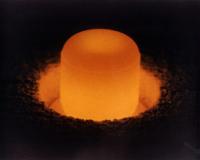
With the production of fifty grams of plutonium-238, researchers at the Department of Energy’s Oak Ridge National Laboratory have restored a U.S. capability dormant for nearly thirty years and set the course to provide power for NASA and other missions. There are currently only thirty-five kilograms, or about seventy-seven pounds, of plutonium-238 set aside for NASA missions, and only about half of this supply meets power specifications. This is only sufficient to power two to three proposed NASA missions through the middle of the 2020s.
-
-
With Diablo Canyon’s future unclear, California’s nuclear age may come to an end
California’s nuclear power age may be coming to an end, as the company which owns the last operating nuclear power plant in the state said it would seek to extend the aging plant’s operational license. The Diablo Canyon plant faces daunting safety, business, and environmental challenges. Thirty years ago it was seen as key to California’s energy future, but worries about earthquakes, concerns about the environment, and cost-attractive energy alternative make Diablo Canyon’s future bleak.
-
-
Rock salt serving to store nuclear waste may not be as impermeable as previously thought
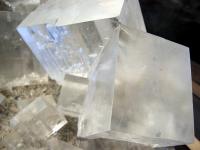
The Waste Isolation Pilot Plant (WIPP) in Carlsbad, New Mexico, stores low-level nuclear waste in salt beds beneath the ground. For decades there has been a proposal to build a permanent central repository under Nevada’s Yucca Mountains. This has renewed interest in rock salt as an alternative permanent storage solution for high-level nuclear waste. Researchers found that rock salt, used not only by the United States, but also by Germany, as a subsurface container for radioactive waste, might not be as impermeable as thought, or as capable of isolating nuclear waste from groundwater in the event that a capsule or storage vessel failed.
-
-
At the nanoscale, concrete proves effective for nuclear containment
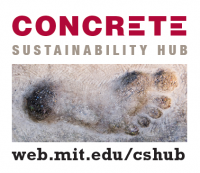
One of the main challenges faced by the nuclear industry is the long-term confinement of nuclear waste. Concrete is one of the barrier materials commonly used to contain radionuclides, both in nuclear reactors and nuclear waste-storing facilities. New research shows concrete is a strong choice for the long-term confinement of nuclear waste.
-
-
Finnish company to construct final disposal facility of spent nuclear fuel

The Finnish government has granted a license to Finnish company Posiva for the construction of a final disposal facility for spent nuclear fuel. The spent fuel assemblies will be encapsulated and placed in the bedrock at a depth of about 400 meters for permanent disposal. The waste will be stored for around 100,000 years before its level of radioactivity begins to dissipate. “This is the world’s first authorization for the final repository of used nuclear waste,” Finland’s Economy Minister Olli Rehn said.
-
-
Inspired by cats’ eyes, new camera can look inside nuclear reactors

Currently 11 percent of electricity worldwide is generated by nuclear reactors. There are 435 reactors in operation with another 71 under construction. Engineers, drawing inspiration from the eyes of cats, have created a new camera that can see radiation coming from nuclear reactors — boosting safety, efficiency, and helping during nuclear disaster emergencies.
-
-
Developing nuclear cladding to withstand Fukushima-like meltdown conditions
Like much of the rest of the world, thousands of scientists and engineers watched in March 2011 as Japan’s Fukushima Daiichi nuclear reactors exploded. The fuel’s cladding, a zirconium alloy used to contain the fuel and radioactive fission products, reacted with boiling coolant water to form hydrogen gas, which then exploded, resulting in the biggest nuclear power-related disaster since Chernobyl. Challenged by this event, two research teams have made progress in developing fuel claddings that are capable of withstanding the high temperatures resulting from a Loss of Coolant Accident (LOCA), like that at Fukushima.
-
-
Cyber vulnerability of civil nuclear facilities underestimated
The risk of a serious cyberattack on civil nuclear infrastructure is growing, as facilities become ever more reliant on digital systems and make increasing use of commercial off-the-shelf software, according to a new report. The report finds that the trend to digitization, when combined with a lack of executive-level awareness of the risks involved, means that nuclear plant personnel may not realize the full extent of their cyber vulnerability and are thus inadequately prepared to deal with potential attacks.
-
-
Fusion energy is economically viable: Study
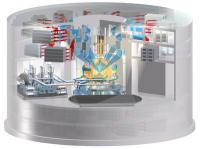
Fusion energy offers the tantalizing possibility of clean, sustainable, and almost limitless energy. But can it be an economically viable option? A team of researchers have calculated the cost of building, running, and decommissioning a fusion power station and how this compares to current fission nuclear power plants. They concluded that a fusion power plant could generate electricity at a similar price to a fission plant.
-
-
Animals have returned to Chernobyl
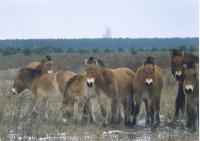
In 1986, after a fire and explosion at the Chernobyl Nuclear Power Plant released radioactive particles into the air, thousands of people left the area, never to return. Now, researchers have found that the Chernobyl site looks less like a disaster zone and more like a nature preserve, teeming with elk, roe deer, red deer, wild boar, and wolves. The findings are a reminder of the resilience of wildlife.
-
-
Small-scale nuclear fusion may be a new energy source
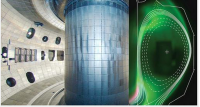
Nuclear fusion is a process whereby atomic nuclei melt together and release energy. Because of the low binding energy of the tiny atomic nuclei, energy can be released by combining two small nuclei with a heavier one. Fusion energy may soon be used in small-scale power stations. This means producing environmentally friendly heating and electricity at a low cost from fuel found in water. Both heating generators and generators for electricity could be developed within a few years, according to researchers.
-
- All
- Regional
- Water
- Biometrics
- Borders/Immig
- Business
- Cybersecurity
- Detection
- Disasters
- Government
- Infrastructure
- International
- Public health
- Public Safety
- Communication interoperabillity
- Emergency services
- Emergency medical services
- Fire
- First response
- IEDs
- Law Enforcement
- Law Enforcement Technology
- Military technology
- Nonlethal weapons
- Nuclear weapons
- Personal protection equipment
- Police
- Notification /alert systems
- Situational awareness
- Weapons systems
- Sci-Tech
- Sector Reports
- Surveillance
- Transportation
Advertising & Marketing: advertise@newswirepubs.com
Editorial: editor@newswirepubs.com
General: info@newswirepubs.com
2010-2011 © News Wire Publications, LLC News Wire Publications, LLC
220 Old Country Road | Suite 200 | Mineola | New York | 11501
Permissions and Policies
Editorial: editor@newswirepubs.com
General: info@newswirepubs.com
2010-2011 © News Wire Publications, LLC News Wire Publications, LLC
220 Old Country Road | Suite 200 | Mineola | New York | 11501
Permissions and Policies
